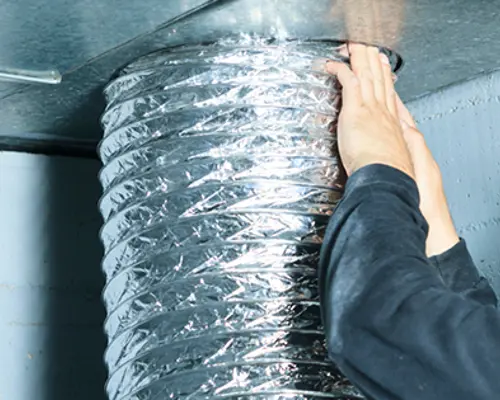
No matter what season it is at your home, HVAC systems can be heard humming as they cool and heat our homes. However, not everyone is having the same feeling as they walk into their warm air or air conditioned space.
Leaks in air ducts are one of the many causes for underperformance of HVAC systems. When there is an air duct leak, conditioned air will escape and may have a negative impact on how your home cools down on a hot summer day. The same in winter when warm air doesn't fully make it out of your vents to heat your family up.
The ductwork in your heating and cooling system determines the route conditioned air takes from your furnace, air conditioner, or heat pump to the inside of your home. If your HVAC equipment has a good system of pipes, the heated or cooled air that it produces will certainly reach your house's interior. If there are leaks in the ductwork, however, that precious air will be lost. This causes wasted energy and money, as well as improper heating and cooling and inefficient HVAC performance.
Following is a brief guide to HVAC ductwork leaks and you can determine if your home is suffering from duct leakage.
What is Duct Leakage?
Duct leakage occurs when conditioned air from a AC unit or furnace leaks out of cracks, seams, and holes in the ductwork before it reaches the intended rooms/spaces within a home or structure. According to ASHRAE, 75% of buildings have duct leakage. Furthermore, on average, 10-25% of conditioned air leaks from each home!
Duct leakage can occur in a number of ways. Duct leaks are classified into several categories, as follows:
Supply Leakage
When supply air ducts are leaking, the amount of airflow from the AC system or furnace to the targeted spaces is reduced.
Equipment Leakage
This is the most common type of failure. Many HVAC components, such as coil cabinets and furnace cabinets, have "seams" that either suck or blow air. If those tiny equipment components are not properly sealed, airflow is also reduced.
Return Leakage
Unconditioned air from unconditioned spaces like attics and wall cavities is drawn into the ventilation system and dispersed back to the equipment when return air ducts leak. This extra burden requires more effort from your HVAC system. Instead of simply reconditioning air, it's conditioning air from unconditioned areas.
Symptoms of Leaky HVAC Ductwork
You may be wondering if your home has leaks within the air duct system living in your walls and ceilings. Take a look at this list below, as these are some of the most common signs of a air duct leak:
- Unexpected heating repairs in winter or AC repairs in summer due to increase in HVAC system usage
- Hot and cold spots throughout your home.
- Rooms or regions of the home that are too warm or cool for the current season.
- Stuffy or unpleasant places in your home.
- Increased levels of airborne dust and particles.
- There is visible damage to ductwork.
- Higher summer and winter utility bills.
- Ductwork located in a crawlspace, attic, or garage.
How To Do a Visual Duct Leakage Test?
If the air ducts in your home are leaking air, it might be time to make some repairs. Often leaks are easy to spot by checking for discoloration or loosening sheetrock along the edges of air vents. However, sometimes leaks are more difficult to detect. If you have a large air leakage coming from an air duct vent, it might be a good idea to run a duct leakage test on your air ducts.
5 Tips for A Visual Duct Leakage Test
1) Make sure you turn off the air conditioning before attempting this test. The air from the air conditioning will make it difficult if not impossible to find leaks. This is especially important when checking air duct leaks at air conditioning air duct returns, or anywhere else where air duct meets sheetrock.
2) When using smoke pencils for air leakage testing, make sure the air conditioner is off. If you are attempting to check air ducts with an active AC unit running it will blow the smoke away from the registers. Additionally, air duct air conditioners tend to pull air through the air intake grills on air duct units, so having it on will reduce air flow coming from the air registers. With the air conditioner turned off, you should be able to detect leaks with smoke pencils.
3) Start at one part of your home and work your way throughout testing air duct air grills and air registers. While air leaks only account for an estimated 1% of air leaks in homes, they can make up as much as 30% of air leakage through air ducts.
4) Flush smoke pencils by puffing them several times to expel air and air pollutants. Make sure they are air-tight by screwing on the cap tightly.
5) Use smoke pencils sparingly and cautiously, as they can discolor paint if left too long or come in contact with it for a prolonged period of time.
Professional Air Duct Leak Repairs
Improve the comfort and efficiency of your house with effective duct performance. When you find duct leaks, eliminate them to create a more pleasant indoor environment and cut down on wasted energy.
For professional HVAC duct repairs and duct cleaning service, count on ARS/Rescue Rooter! Call our HVAC technicians at 866-399-2885 or find your nearest ARS/Rescue Rooter location to schedule service today!






